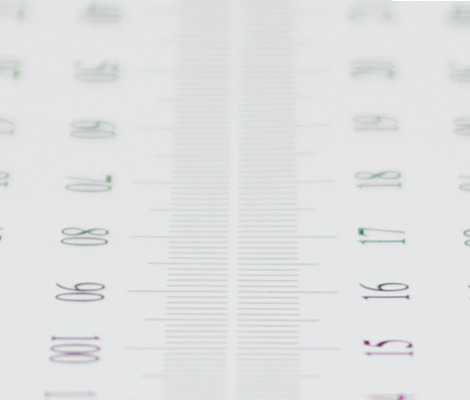|
Zeiss Biogon T* 35mm f/2 ZM on Sony NEX - Review / Lab Test Report - Analysis |
|
Lens Reviews -
Sony Alpha/NEX (APS-C)
|
|
Page 2 of 2

Distortion
The Zeiss lens produces a negligible amount of barrel distortion (~0.1%) which is irrelevant in field conditions.

Vignetting
The vignetting characteristic of the Biogon is rather unusual. Full format lenses don't tend to have any issues on APS-C cameras but the Zeiss lens struggles quite a bit here. The light fall-off reaches a rather obvious 1.2EV (f-stops) at f/2. There's still some moderate vignetting at f/2.8 and you need to stop down to f/4 till the issue is really resolved from a field perspective.

MTF (resolution)
The Zeiss lens delivers a very impressive resolution across the tested aperture range. The center quality is already very good at f/2 the borders follow on a good+ level here. The center performance is lifted into excellent territory from f/2.8 onwards and the borders reach very good figures starting at this setting. The peak quality is reached somewhere between f/4 and f/5.6 with an outstanding center and very good borders. Diffraction effects have a higher impact from f/11 onwards.
Our sample of the Zeiss lens suffered from a slight centering issue at f/2. A perfect sample may even reach slightly better results at large apertures.
Please note that the MTF results are not directly comparable across the different systems!
Below is a simplified summary of the formal findings. The chart shows line widths per picture height (LW/PH) which can be taken as a measure for sharpness.
If you want to know more about the MTF50 figures you may check out the corresponding Imatest Explanations
Chromatic Aberrations (CAs)
Lateral CAs are well controlled with an average pixel width of less than 0.9px at the image borders. This isn't really objectionable in field conditions.

Bokeh Fringing / Longitudinal Chromatic Aberrations (LoCA)
LoCAs (non-coinciding focal planes of the various colors) are a common issue with relatively fast glass. As you can
notice below the halos have different colors - magenta (red + blue) in front the focus point and green beyond. This is primarily a problem at f/2 and f/2.8. The issue dissolves from f/4 onwards.
|
Move the mouse cursor over the f-stop marks below to observe the respective LoCAs
|
| f/2 |
f/2.8 |
f/4 |
|

|
VerdictAt the time of this review Sony does not offer a native standard lens for Sony NEX cameras so it makes sense to explore beyond the beaten path. The Zeiss Biogon T* 35mm f/2 ZM is a Leica M mount lens which can easily be used via a Leica M to E-mount adapter. Consequently you've to live without AF and an automatic aperture. However, thanks to the EVIL design of Sony NEX cameras (magnified focus view, LiveView) this is less of an issue compared to adapter solutions on DSLRs.
The Biogon produced impressive quality figures in our lab. The resolution is good+ to very good at f/2 and reaches very good to excellent results beyond till diffraction is limiting the quality from f/11 onwards. Lateral CAs are well controlled and not overly field relevant. The bokeh fringing (LoCAs) is typical for such a fast lens. Distortions are basically absent. The most obvious weakness of the lens is the amount of light fall-off at f/2 which is quite a bit higher than average for a full format lens.
The build quality of the Zeiss lens is superb thanks to an all-metal body and super-smooth controls. Even so the pricing is on the steep side at around 900 EUR. This may still be rather affordable within the Leica M scope but it's probably over the edge for an adapter solution on a Sony NEX camera.
|